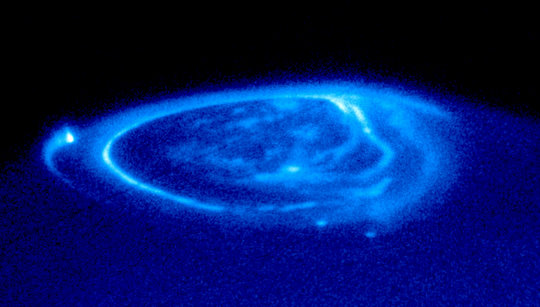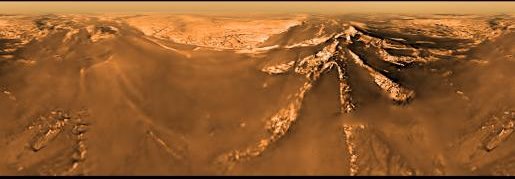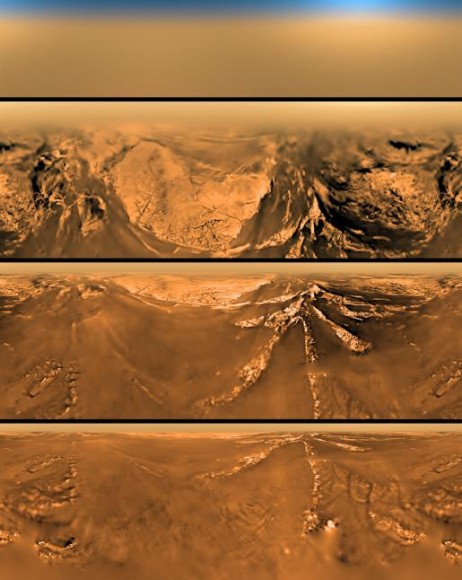Here’s this week’s “Where In The Universe?” mystery image. Your mission, should you choose to accept, is to guess what location in the universe is depicted here. No peeking below before you make a guess. Give yourself an extra point if you can name the feature shown here, and another point or two if you can name the spacecraft that took this image. I have to admit, I was drawn to this image strictly by the color: blue is my favorite, and especially this shade of blue. Kind of electric, don’t you think? Let’s see, could this be a moon, or a planet, or even a portion of a planetary nebula, or perhaps a photo from somewhere on our home planet? Make your guesses now, or maybe you knew what this was the moment you saw it….
Have you made your guess?
This spectacular image was taken by the Hubble Space Telescope. It’s a close-up view of an electric-blue aurora that is eerily glowing on the planet Jupiter. It was taken by HST’s Space Telescope Imaging Spectrograph (STIS) using an ultraviolet filter.
Auroras are curtains of light resulting from high-energy electrons racing along the planet’s magnetic field into the upper atmosphere. The electrons excite atmospheric gases, causing them to glow. The aurora is centered on Jupiter’s magnetic north pole.
Although this aurora resembles the same phenomenon seen at Earth’s polar regions, this image shows unique emissions from the magnetic “footprints” of three of Jupiter’s largest moons. These points are reached by following Jupiter’s magnetic field from each satellite down to the planet.
Auroral footprints can be seen in this image from Io (along the left hand limb), Ganymede (near the center), and Europa (just below and to the right of Ganymede’s auroral footprint). These emissions, produced by electric currents generated by the satellites, flow along Jupiter’s magnetic field, bouncing in and out of the upper atmosphere. They are unlike anything seen on Earth.
This ultraviolet image of Jupiter was taken with the on November 26, 1998. In this ultraviolet view, the aurora stands out clearly, but Jupiter’s cloud structure is masked by haze.
So, how’d you do?
Image credit: NASA/ESA, John Clarke (University of Michigan)



